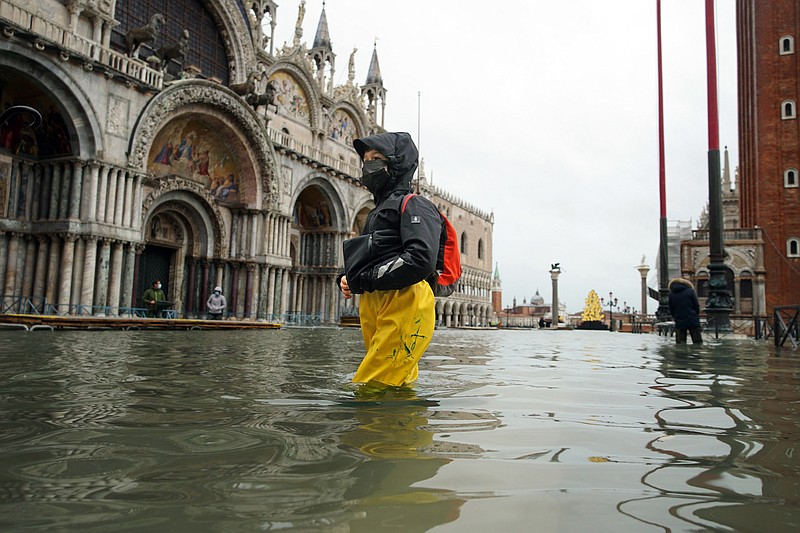VENICE, Italy (AP) — After Venice suffered the second- worst flood in its history in November 2019, it was inundated with four more exceptional tides within six weeks, shocking Venetians and triggering fears about the worsening impact of climate change.
The repeated invasion of brackish lagoon water into St. Mark’s Basilica this summer is a quiet reminder the threat hasn’t receded.
“I can only say that in August, a month when this never used to happen, we had tides over a meter five times. I am talking about the month of August, when we are quiet,” St. Mark’s chief caretaker, Carlo Alberto Tesserin, told the Associated Press.
Venice’s unique topography, built on log piles among canals, has made it particularly vulnerable to climate change. Rising sea levels are increasing the frequency of high tides that inundate the 1,600-year-old Italian lagoon city, which is also gradually sinking.
It is the fate of coastal cities like Venice that will be on the minds of climate scientists and global leaders meeting in Glasgow, Scotland, at a U.N. climate conference that begins Oct. 31.
Venice’s worse-case scenario for sea level rise by the end of the century is a startling 3 feet, 11 inches, according to a new study published by the European Geosciences Union. That is 50 percent higher than the worse-case global sea-rise average 2 feet, 7½ inches) forecast by the U.N. science panel.
The city’s interplay of canals and architecture, of natural habitat and human ingenuity, also has earned it recognition as a UNESCO World Heritage site for its outstanding universal value, a designation put at risk of late because of the impact of over-tourism and cruise ship traffic. It escaped the endangered list after Italy banned cruise ships from passing through St. Mark’s Basin, but alarm bells are still ringing.
Sitting at Venice’s lowest spot, St. Mark’s Basilica offers a unique position to monitor the impact of rising seas on the city. The piazza outside floods at around 30 inches, and water passes the narthex into the church at 34.5 inches, which has been reinforced up from a previous 25.5 inches.
“Conditions are continuing to worsen since the flooding of November 2019. We therefore have the certainty that in these months, flooding is no longer an occasional phenomenon. It is an everyday occurrence,” said Tesserin, whose honorific, First Procurator of St. Mark’s, dates back to the ninth century.
In the last two decades, there have been nearly as many inundations in Venice over 1.1 meters — the official level for “acqua alta,” or “high water,” provoked by tides, winds and lunar cycles — as during the previous 100 years: 163 vs. 166, according to city data.
Exceptional floods of more than 4 feet, 7 inches also are accelerating. That mark has been hit 25 times since Venice starting keeping such records in 1872. Two-thirds of those have been registered in the last 20 years, with five, or one-fifth of the total, from Nov. 12-Dec. 23, 2019.
“What is happening now is on the continuum for Venetians, who have always lived with periodic flooding,” said Jane Da Mosto, executive director of We Are Here Venice. “We are living with flooding that has become increasingly frequent, so my concern is that people haven’t really realized we are in a climate crisis. We are already living it now. It is not a question of plans to deal with it in the future. We need to have solutions ready for today.”

